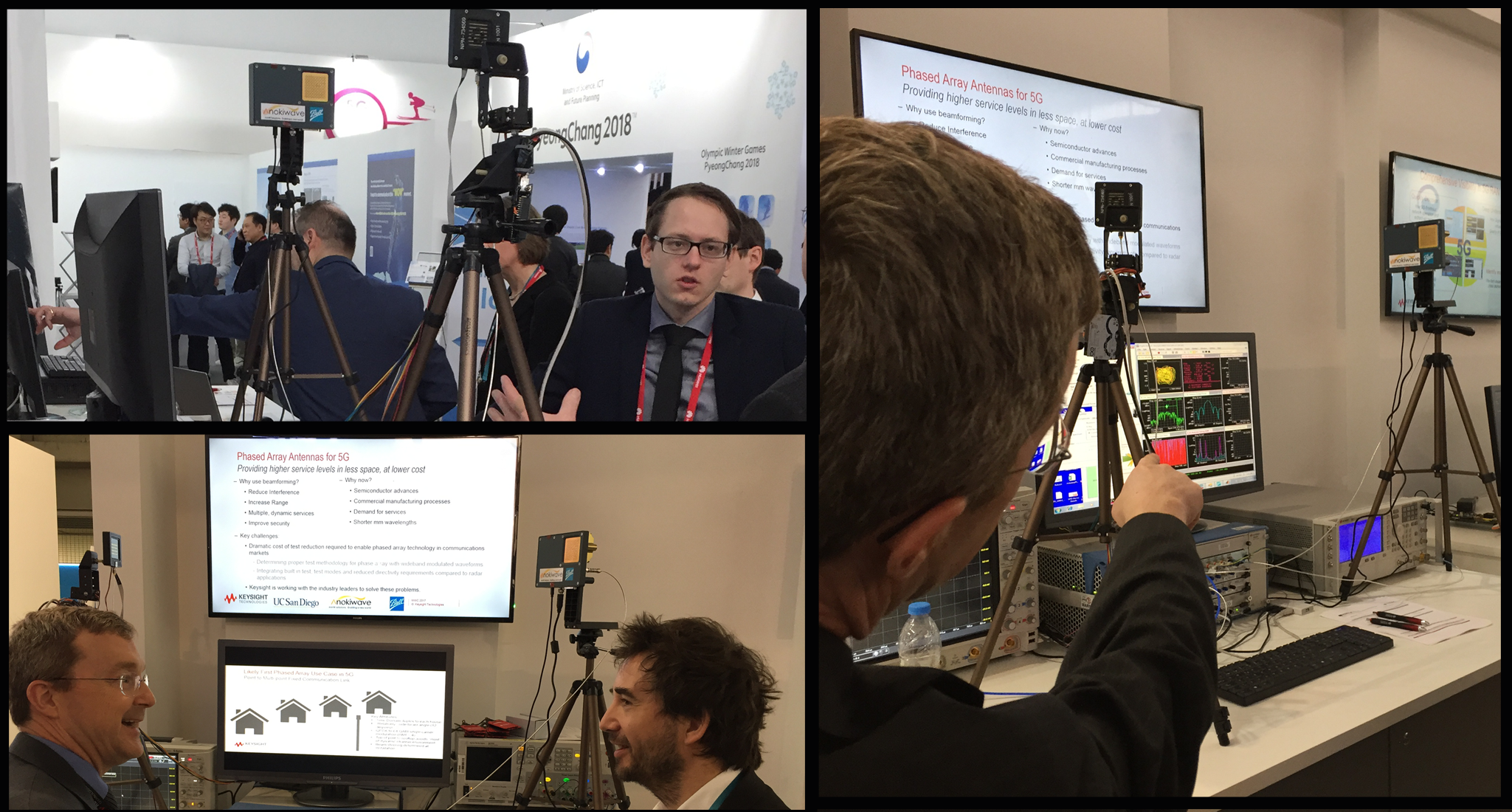5G Makes Major Strides in First Half of 2017
 |
Ian Gresham |
|---|---|
|
|
|
The conversation around 5G has reached a crescendo. That fact became crystal at this year’s Mobile World Congress (MWC), which saw its largest crowd ever of 104,000 attendees. Discussion at the conference centered around the future of the mobile industry, and one of the main themes was 5G.
From technical tracks on the development of sub-6-GHz spectrum bands to panels posing high-level implications for IoT applications, 5G was both well represented and well received at the show.
 A particularly interesting presentation was Keysight’s (www.keysight.com) wideband real-time beamforming solution, on hardware operating at 28 GHz provided by Anokiwave and the University of California San Diego (UCSD) (see figure). The demonstration clearly showed how researchers can quickly and accurately test analog, digital, and hybrid beamforming systems. As the first true phased-array ever demonstrated at MWC, the booth generated much excitement.
A particularly interesting presentation was Keysight’s (www.keysight.com) wideband real-time beamforming solution, on hardware operating at 28 GHz provided by Anokiwave and the University of California San Diego (UCSD) (see figure). The demonstration clearly showed how researchers can quickly and accurately test analog, digital, and hybrid beamforming systems. As the first true phased-array ever demonstrated at MWC, the booth generated much excitement.
With 5G quickly advancing, another natural topic of interest was the transition path of 4G networks. Most experts agreed that a full 5G rollout is expected by 2020, but pointed to multiple field trials already underway that feature commercially viable RF front ends with beamforming and active antenna solutions. Experts also predicted 2018 and 2019 will bring more field trials with key network providers, underscoring the bottom line—the industry cannot afford to wait for 2020 to begin testing.
The connected car and use of sub-6-GHz spectrum for the Internet of Things stole the show. The market for these technologies is expected to be huge. It’s predicted that connected devices will grow to more than 20 billion by 2020, and the push for vehicle-to-everything (V2X) communications in vehicles will cover everything from the smart highway and autonomous driving to continuous connectivity.
The magnitude of the opportunity demands focus, but resources are limited. Those opportunities that require only slight evolutions of technology will be the priority and focus for stakeholders going forward.
One aspect of 5G arguably neglected at MWC was the consumer end link. While millimeter-wave technology was well represented, solutions for customer premises equipment (CPE) weren’t so fully baked out. Speakers and presenters indicated a burgeoning emphasis for 28-GHz spectrum, opening the door for growth and improvement in CPEs moving forward.
On the heels of MWC came two more major announcements. First, international body 3GPP asserted its plans to accelerate 5G deployment to 2019. This is huge news for carriers chomping at the bit to roll out 5G for increasingly data-hungry customers. Device manufacturers and network providers alike have come out in droves to support the plan, including Qualcomm, Nokia, Verizon, Intel, Ericsson, Huawei, and Samsung.
The other announcement came from recently appointed U.S. FCC Chairman Ajit Pai, promising to respond faster to new technology proposals. This commitment is expected to impact the speed and direction of 5G development around the world.
Experts and major industry bodies have spoken—5G will arrive faster than many envisioned. If you’re not preparing for it now, you’re already behind. As new millimeter-wave frequency bands are allocated by the appropriate regulatory entities for 5G systems worldwide, companies such as Anokiwave will respond with products to help meet emerging needs.

